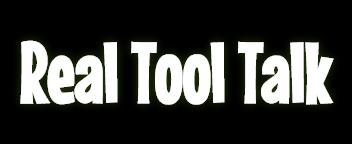
Imagine this
You are starting a new DIY project. As you are drawing up your plans you realize that your aging drill just isn’t going to do the job. So you head to your local home improvement store to purchase a new cordless drill. Now maybe you have done your research and know what brand of drill you want. But when you get there, you notice that there is a brushless option of the drill you want. Now ask yourself, Is it worth the extra money for a brushless motor?
With new innovations in the Power tool industry, many companies have turned their attention to Brushless Motor line-ups. Brushless motor technology is not exactly new to the cordless tool market. However, many people are confused by what a brushless motor is. Not to mention why they should spend the extra money on it.
That is why we’d like to take a moment of your time and explain the difference between brushed and brushless motors. We would also like to explain how each motor works, and the benefits of a brushless motor. Also how the technology advancements have helped the power tool industry.
If you are in a hurry, check out the Table of Contents to find exactly what you are looking for.
How do Brushed Motors Work
A brushed motor is made up of four essential parts, carbon brushes, magnets, an armature, and a commutator. The brushes and magnets are stationary, while the armature and commutator rotate on the motor shaft. A current is applied from the battery to the brushes, which are in constant contact with the commutator. The current is then passed through the copper windings on the armature, which are magnetized by the electric current and pushed against the stationary magnets, forcing the armature to spin. The spinning stops when the current from the battery is removed.
Disadvantages of Brushed Motors
One of the major disadvantages of having a brushed motor in power tools is the wear parts that the motor is composed of. Because the carbon brushes are in constant contact with the commutator, there is resulting friction. This friction causes the tool to have a slight drop in speed and energy loss. Think of it like trying to drive your car while holding the brakes. You can still move, but you will have to rev the engine higher. And as a result, you are going to burn up your brake pads faster.
Similarly to the brakes on your car, the carbon brushes tend to wear out from the friction. Fortunately, the brushes are replaceable. However, you will generally have to send your tool into the manufacturer to have it serviced. So you will have to be without it for a while.
Check out this video for more information on how Brushed and Brushless motors operate.
So what’s so great about brushless Motors?
Brushless motors aren’t exactly new technology. They have been around since the ’60s in the industrial scene. They were commonly used in factories to drive conveyor belts in factories.
In 2009, Makita released their first Brushless impact driver to the commercial market. Since then, manufacturers have paired their new brushless tools with powerful Lithium-ion batteries. Doing this created some of the most powerful, and durable tools on the market today.
In a brushless motor, the commutator and brushes of a brushed motor, are replaced with a small circuit board, that delivers the current from the battery to the copper windings on the armature.
Because of this, the tool is able to sense the resistance of the task it is being used for and able to draw only the current it needs from the battery. Unlike a brushed motor that will always run as fast as it can while in use.
Brushless motors are generally more powerful, as the copper windings are on the outside of the motor, allowing them to be larger and manage more current. Also because there are no brushes to create friction, there isn’t an excessive build-up of heat and resulting voltage loss.
The Cost Factor
Price is something to consider when you are looking to buy a new power tool. Because of the technology brushless motors offer, they are considerably higher priced than a brushed power tool, up to 30% more in some cases. You are basically powering up a small computer every time you pull the trigger on a brushless power tool.
Advantages of a Brushless Motor
A brushless power tool definitely has its place in several industries that require power tools. While the cost might deter some from trying these new tools, those that have are amazed by what they got for their money. I myself have recently upgraded my power tools at work to Milwaukee’s Fuel line up, and can honestly say, I should have done it sooner.
The Brushless motors in today’s power tools offer numerous advantages. To start with, the compact size of a brushless motor allows for power tools to be lighter than it’s brushed counterparts. Which helps portability, but also helps reduce noise and vibration.
The absence of carbon brushes removes the presence of friction between the rotor and stator. This improves the efficiency of the tool significantly and with the lithium batteries that are used, power can be up almost 50%.
Check out this video to see the difference in a Brush and Brushless Impact Driver
Final Thoughts
While Brushed motors are still a relevant component in the power tool industry today, Brushless Motor Technology offers several advantages. By being more energy-efficient, reducing overheating, and having minimal maintenance, brushless tools are being made more appealing to the consumers.
Users can typically expect the same length of warranty whether the tool is brushed or brushless. However, the combination of these benefits also allows for longer tool life out of a brushless motor. Which mean these tools will last far beyond the offered warranty.
Original Text from http://realtooltalk.com/
Original Text from http://realtooltalk.com/
